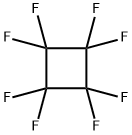Octadecanedioic acid mono-tert-butyl ester
- CAS NO.:843666-40-0
- Empirical Formula: C22H42O4
- Molecular Weight: 370.57
- MDL number: MFCD09991735
- EINECS: 1592732-453-0
- SAFETY DATA SHEET (SDS)
- Update Date: 2024-11-13 18:13:23

What is Octadecanedioic acid mono-tert-butyl ester?
Description
Octadecanedioic acid mono-tert-butyl ester is a non-cleavable ADC linker or alkyl chain-based PROTAC linker for the synthesis of antibody-drug couplings (ADCs) and PROTACs.
The Uses of Octadecanedioic acid mono-tert-butyl ester
18-(tert-Butoxy)-18-oxooctadecanoic Acid is used to engineer long-acting, potent exendin-4 based GLP-1 analog for microstructure-based transdermal delivery for glycemic control.
What are the applications of Application
18-(tert-Butoxy)-18-oxooctadecanoic acid) is a short linker featuring a carboxylic acid and a tert-butyl ester. Carboxylic acids can be reacted with alcohols or amines, while the tert-butyl ester can be deprotected and further connected to another molecule. It is a pharmaceutical intermediate ingredient used in the preparation of somatostatin. It also has catalytic activity.
Properties of Octadecanedioic acid mono-tert-butyl ester
| Melting point: | 68 °C |
| Boiling point: | 470.7±18.0 °C(Predicted) |
| Density | 0.950±0.06 g/cm3(Predicted) |
| storage temp. | Sealed in dry,Room Temperature |
| solubility | DMSO (Slightly), Methanol (Slightly) |
| form | Solid |
| pka | 4.78±0.10(Predicted) |
| color | White to Off-White |
Safety information for Octadecanedioic acid mono-tert-butyl ester
| Signal word | Danger |
| Pictogram(s) |
 Skull and Crossbones Acute Toxicity GHS06 |
| GHS Hazard Statements |
H301:Acute toxicity,oral H315:Skin corrosion/irritation H319:Serious eye damage/eye irritation |
| Precautionary Statement Codes |
P264:Wash hands thoroughly after handling. P264:Wash skin thouroughly after handling. P270:Do not eat, drink or smoke when using this product. P280:Wear protective gloves/protective clothing/eye protection/face protection. P302+P352:IF ON SKIN: wash with plenty of soap and water. P305+P351+P338:IF IN EYES: Rinse cautiously with water for several minutes. Remove contact lenses, if present and easy to do. Continuerinsing. P332+P313:IF SKIN irritation occurs: Get medical advice/attention. P337+P313:IF eye irritation persists: Get medical advice/attention. P405:Store locked up. |
Computed Descriptors for Octadecanedioic acid mono-tert-butyl ester
New Products
(S)-3-Aminobutanenitrile hydrochloride 4-Methylphenylacetic acid N-Boc-D-alaninol N-BOC-D/L-ALANINOL Tert-butyl bis(2-chloroethyl)carbamate 3-Morpholino-1-(4-nitrophenyl)-5,6-dihydropyridin- 2(1H)-one Furan-2,5-Dicarboxylic Acid Tropic acid 1-Bromo-3,5-Di-Tert-Butylbenzene S-2-CHLORO PROPIONIC ACID ETHYL ISOCYANOACETATE 2-Bromo-1,3-Bis(Dimethylamino)Trimethinium Hexafluorophosphate 4-IODO BENZOIC ACID 3-NITRO-2-METHYL ANILINE 1-(2,4-DICHLOROPHENYL) ETHANAMINE (2-Hydroxyphenyl)acetonitrile 4-Bromopyrazole 2-(Cyanocyclohexyl)acetic acid 4-methoxy-3,5-dinitropyridine 1-(4-(aminomethyl)benzyl)urea hydrochloride 2-aminopropyl benzoate hydrochloride diethyl 2-(2-((tertbutoxycarbonyl)amino) ethyl)malonate tert-butyl 4- (ureidomethyl)benzylcarbamate Ethyl-2-chloro((4-methoxyphenyl)hydrazono)acetateRelated products of tetrahydrofuran








You may like
-
 843666-40-0 18-(tert-Butoxy)-18-oxooctadecanoic acid 98%View Details
843666-40-0 18-(tert-Butoxy)-18-oxooctadecanoic acid 98%View Details
843666-40-0 -
 18-(tert-Butoxy)-18-oxooctadecanoic acid, 97% CAS 843666-40-0View Details
18-(tert-Butoxy)-18-oxooctadecanoic acid, 97% CAS 843666-40-0View Details
843666-40-0 -
 18-(tert-Butoxy)-18-oxooctadecanoic Acid CAS 843666-40-0View Details
18-(tert-Butoxy)-18-oxooctadecanoic Acid CAS 843666-40-0View Details
843666-40-0 -
 Octadecanedioic acid mono-tert-butyl ester 95% CAS 843666-40-0View Details
Octadecanedioic acid mono-tert-butyl ester 95% CAS 843666-40-0View Details
843666-40-0 -
 1975-50-4 98%View Details
1975-50-4 98%View Details
1975-50-4 -
 2-HYDROXY BENZYL ALCOHOL 98%View Details
2-HYDROXY BENZYL ALCOHOL 98%View Details
90-01-7 -
 14714-50-2 (2-Hydroxyphenyl)acetonitrile 98+View Details
14714-50-2 (2-Hydroxyphenyl)acetonitrile 98+View Details
14714-50-2 -
 118753-70-1 98+View Details
118753-70-1 98+View Details
118753-70-1
Statement: All products displayed on this website are only used for non medical purposes such as industrial applications or scientific research, and cannot be used for clinical diagnosis or treatment of humans or animals. They are not medicinal or edible.